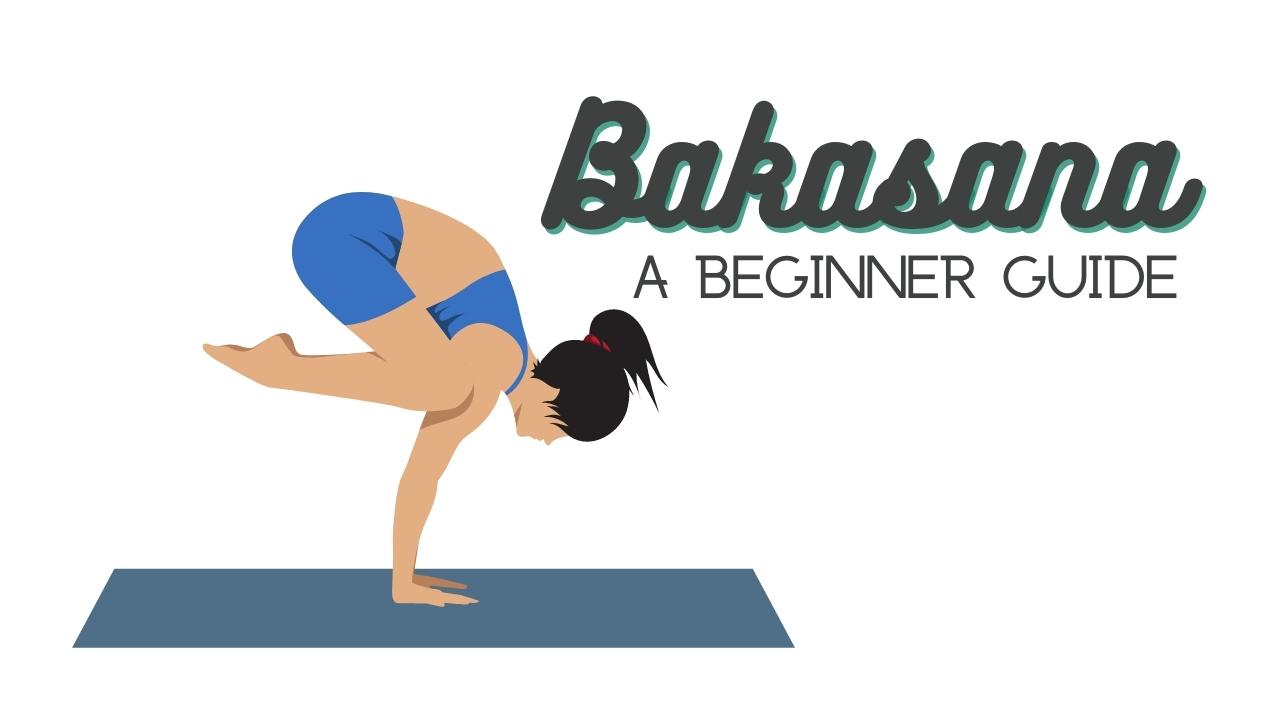Bakasana is a Yoga pose that many beginners want to learn, not because of its benefits, but because it is difficult and it looks cool, too. But there is more to Bakasana than that, it is an inversion Yoga pose that comes with many benefits. In this guide, you will learn how to do Bakasana in a safe & easy way as a beginner, you’ll learn all of its benefits and if you are advanced, we are sure that there is something new you can learn.
Table of Contents
- What is Bakasana?
- Pose Overview
- Bakasana Benefits
- Beginner Tips
- How to do Bakasana
- Bakasana Conclusion
What is Bakasana?
Bakasana is often referred to as the crane pose, sometimes also as the crow pose, but there is a difference. In Bakasana you place your knees outside of your armpits while trying to straighten your arms as much as possible. In Kakasana or crow pose, you place your knees outside of your triceps and keep your arms bent.
Bakasana is a challenging balancing pose as well as a minor inversion. It is a great exercise to overcome fear and strengthen your core & arms as well as your wrists. When practiced regularly, you will see a lot of improvement in your posture as well as in the flexibility of your wrists.
Pose Overview
Sanskrit Name: Bakāsana
Western Name: Crane/Crow Pose
Yoga Pose Type: Inversion
Preparation: 3x Sun Salutation A (not required but recommended)
Follow-up: Sirsasana
Why we love this Yoga Pose: We love Bakasana because it’s a challenging pose and a great transition to Sirsasana! Also, the benefits of strengthening the arms & core as well as the improvements in balance are something that we really like about this Yoga pose.
Bakasana Benefits
As mentioned above, Bakasana comes with a ton of benefits. Some of them are:
- Strengthens abdominal muscles, arms, and shoulders.
- Improves wrist flexibility.
- It’s a great tool to overcome fear.
While we love all of these benefits, we really want to emphasize it as a tool to become better at balancing poses. It is a great way to learn how to lift up your feet from the floor and rely on the strength and balance of your arms only in a safe way. This can be great if you want to learn something like Sirsasana (headstand) next.
Beginner Tips
- Warm up your wrists before attempting this pose.
- Do a couple of rounds of Sun Salutations A to get your entire body warmed up
- Bakasana requires core strength rather than arm strength. So don’t think you need to strengthen your arms to help with the pose, the core is key.
- Tight wrists can prevent you from getting in the pose. If you have very tight wrists, work on wrist flexibility first.
- Never hop forward to attempt to get into the pose. This will only result in you falling over and injuring yourself.
- Don’t be scared of falling. If you progressively advance in this pose, there is almost no risk of falling. If you are still scared, place some big billows or blankets in front of you, that should take some of the fear away.
- Place a Yoga block or some books underneath your feet to elevate your hips a bit further. This helps to get into the pose easier.
How to do Bakasana
Take your time while learning this pose and don’t rush anywhere. Slowly progress through the steps and you will get closer to full Bakasana.
- Place your hands on the floor beneath your shoulders.
- Spread your fingers wide and turn your elbow creases forward.
- Turn your toes forward and lift your hips up.
- Bend your elbows while maintaining a straight back.
- Place your shins on the back or the side of your arms as close to your armpits as you can.
- Shift your weight forward and stack your elbows above your wrists.
- Gaze forward and strongly pull your navel up
- Lift up one foot at a time or both at the same time.
- Straighten your arms as much as you can (or keep them bent for crow pose).
- Stay in the pose for as long as you feel comfortable.
Bakasana Conclusion
Bakasana is a fun pose to learn, but we recommend you take your time with it if you have no experience with balancing poses yet. Getting injured or having an accident while practicing can prevent you from practicing altogether because you might be scared to “fall again” in future attempts. Always try to know your limits and stick with them.
We like to use the Navy Seal mindset for that context: “Slow is smooth and smooth is fast”. Always progress in a safe way. Did this guide help you to learn the Bakasana Yoga Pose? Let us know in the comments below!
